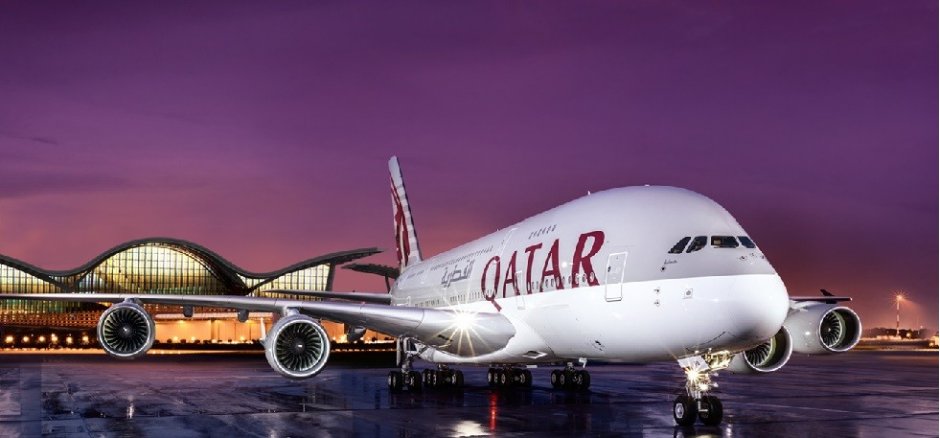Nobody can question the innovative nature of Gulf carrier Emirates Airline, but it is facing a challenging time along with its rival hub carriers in the region as the global aviation industry continues to change. After more than 30 years of growth, taking advantage of the geographical position of the United Arab Emirates (UAE) and Dubai’s need to diversify its economy away from oil and gas industries, it is fair to say that Emirates has changed the way we fly.
Its success has seen Eithad Airways down the road in Abu Dhabi and Qatar Airways in Doha develop similar, albeit unique, business models while constantly attempting to outperform one another with service offerings, particularly in the premium cabins.
But it is has been Emirates that led the way. With the foresight of industry visionary the late Maurice Flanagan, the airline has built a hub-and-spoke transfer network that provides one-stop connection options via Dubai International Airport, once a small airfield but now the largest international gateway in the world.

This article first appeared in Routes News, issue 3 2017.
Under the current stewardship of Sir Tim Clark, Emirates has grown to become one of the most recognisable travel brands and this model has been based around purely serving air corridors with widebodied aircraft. In fact, since 1987, just two years since its inception, the airline has solely operated more than 300 twin-aisle aircraft, resulting in a fleet today that includes almost 100 Airbus A380 Superjumbos.
Although the European and Asian legacy airlines have failed to react quickly to the emergence of the Gulf hub carriers in the long-haul market, Clark does not plan to watch other airlines steal passengers from his own.
Changing economic conditions are forcing the Gulf airlines to revise their business models and slow their once rampant growth in capacity. Emirates is quickly moving to strip costs from its business as it adapts to weaker markets, a stronger dollar and the rise of low-cost, long-haul rivals after seeing group annual profits fall 64% to AED1.3 billion last year.
“We are subject to market changes like everybody else is. One of the challenges is the rise of lower-cost, long-haul travel, which is a gathering storm,” said Clark at the recent ITB travel event in Berlin, Germany.
It is a time for change at the Gulf carriers. Emirates is seeking to trim excess fat to boost efficiency and is understood to be evaluating smaller widebodies and even larger singleaisle airliners. It is also boosting its links with its low-cost sister business, flydubai, which it has kept at arm’s length since its birth in the late 2000s. Etihad is also changing its focus after a few too many bad business equity investments and developing an unlikely marriage with Lufthansa, an airline that has been among the most outspoken European airlines on the growth of the Gulf carriers.
Airline turnaround tactician Christoph Mueller joined Emirates in September 2016 as chief digital and innovation officer, a role that many see as part of a succession arrangement for Clark’s retirement. He is also now being touted in the local media as a possible successor for Etihad Airways CEO James Hogan, who leaves on July 1, highlighting how aware both UAE operators are for the need to adapt their business models.

Meanwhile, Akbar Al Baker continues to chart the rapid growth of the Qatar Airways network, adding to the capacity pressures on both Emirates and Etihad. The airline appears to show no signs of slowing its rise with lack of aircraft the only limit to its ambitions. In the past weeks, it has emerged that the airline plans to add flights to many varied destinations, including Abidjan, Ivory Coast; Accra, Ghana; Cardiff, UK; Malaga, Spain and San Francisco in the US in 2018 and 2019. Launch plans are currently being formalised.
More immediately, Qatar Airways has already introduced in February what it calls the world’s longest commercial flight with its Doha-Auckland route and has begun flights to Yanbu. It has also confirmed launch dates for flights to Dublin and Tabuk in June, Nice and Skopje in July and Las Vegas in January 2018, albeit the latter may be delayed until later in the year. Other markets it is eyeing for growth include Rio de Janeiro, Brazil; Sarajevo, Bosnia; Libreville, Gabon; and Chiang Mai, Thailand.
Our analysis of the three airlines’ flight schedules shows that during the 2000s, they have together added 130 destinations from their respective hubs, Qatar Airways accounting for almost half that growth and the most significant rise over the past two years. This is without including almost 20 new destinations for which it has yet to confirm schedules and launch dates.
Cutting capacity to the US
With regular talk of capacity growth from these carriers, the recent announcement that Emirates is cutting its capacity into the US by around a fifth was a surprise.
Yes, policies introduced by President Trump’s administration are clearly impacting bookings, but investigations show that its capacity into the US has been shrinking since around the middle of last year. The travel and electronics bans have simply exacerbated the situation. Emirates has initiated a rapid route growth into the US, while it still can, following concerns that the open skies arrangement could soon come to an end.
The rapid growth of Qatar Airways has also significantly pivoted a market that is underpinned for the Gulf carriers by traffic flows from the Indian subcontinent, often at questionable yields.
We are seeing something similar in the UK too, and while Qatar Airways is adding a new destination for the Gulf region in the form of the Welsh capital, Cardiff, and exploring other UK regional markets, Emirates has quietly removed its third daily rotation into Birmingham from the winter 2017-18 schedules. In the past, Emirates had pioneered flying into the UK regions as shown by its debut in Newcastle, but the retirement of its A330 and A340 fleets means it no longer has an aircraft to enter such markets sustainably.
 In the meantime, Nigel Mayes, ASM SVP consulting and product development, believes Qatar Airways may yet continue to be trendsetters for the Middle Eastern big three thanks to its focus on smaller aircraft.
In the meantime, Nigel Mayes, ASM SVP consulting and product development, believes Qatar Airways may yet continue to be trendsetters for the Middle Eastern big three thanks to its focus on smaller aircraft.
Nigel Mayes
Senior vice president
ASM Global
He says: “The recent announcement by Qatar of 12 new destinations demonstrates the advantage Qatar has over its competitors, Emirates and Etihad; owing to its larger narrowbody fleet and widebodies with fewer seats, it can serve smaller markets. Qatar has more narrowbodies than Etihad and the smaller Boeing 787-8 Dreamliner with 254 seats, rather than Etihad’s 787-9 with 299 seats.
“Meanwhile, Emirates’ smallest aircraft, aside from its A319 corporate jet, is its 777-200LR with 266 seats, of which it has 10. Its next biggest aircraft is the 777- 300ER with 354 seats. Combine these fleet dynamics with bilateral constraints in some countries, including the two largest markets of India and China, and the list of new opportunities for the Middle East carriers shrinks dramatically. This explains why Qatar’s recent announcement includes some smaller markets that would be unlikely to come on the radar of Etihad and Emirates.
“I also believe it is only a matter of time before Emirates acquire narrowbody aircraft and widebodies with a low seat configuration.“
Even without the local rivalry, a big threat now comes from passengers bypassing the Gulf hub and flying directly from points in Asia and Europe using longer-range, modern-generation airliners and flying with the growing number of long-haul, low-cost carriers.
Stronger local competition
Scoot, part of the Singapore Airlines Group, is adding flights from Singapore to Athens, while Norwegian recently announced London-Singapore flights and AirAsia X will be returning to the European market very soon, with an enormous feeder network across all of Asia. These airlines will all add additional city pairs as the model evolves, while we are also likely to see LEVEL from IAG start eastbound flights from Barcelona and other LCC ventures from Air France and Lufthansa. Meanwhile, others could enter the arena, including Vistara in India, also linked to the Singapore Airlines Group.
We are also witnessing stronger local competition from the likes of Kuwait Airways, Oman Air, Pakistan International Airlines and Saudia. These airlines are emerging as credible competitors in the long-haul market after working hard to boost their product and reliability.
What is clear is the Gulf hub carriers are prepared to adapt to change and, unlike the legacy airlines before them when they first arrived into the market, they will seek to transform their operations to combat rising competition. But despite having grown local leisure and business flows in and out of the region, the big question remains: can they sustain the three major hub airports of Abu Dhabi, Doha and Dubai when passengers start taking advantage of the low fares and convenience of non-stop flights from the emerging low-cost, long-haul airlines?





